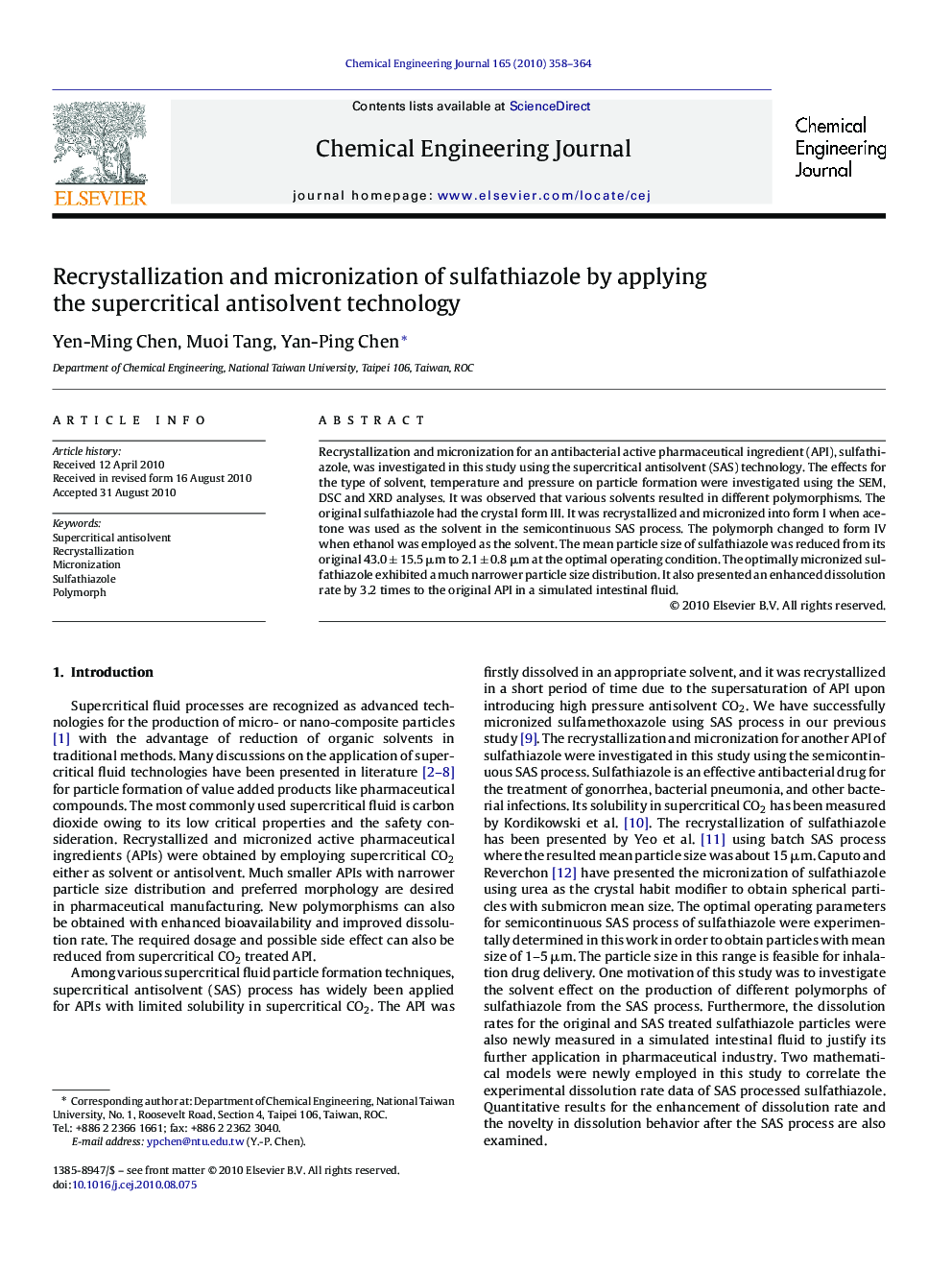| Article ID | Journal | Published Year | Pages | File Type |
|---|---|---|---|---|
| 152035 | Chemical Engineering Journal | 2010 | 7 Pages |
Recrystallization and micronization for an antibacterial active pharmaceutical ingredient (API), sulfathiazole, was investigated in this study using the supercritical antisolvent (SAS) technology. The effects for the type of solvent, temperature and pressure on particle formation were investigated using the SEM, DSC and XRD analyses. It was observed that various solvents resulted in different polymorphisms. The original sulfathiazole had the crystal form III. It was recrystallized and micronized into form I when acetone was used as the solvent in the semicontinuous SAS process. The polymorph changed to form IV when ethanol was employed as the solvent. The mean particle size of sulfathiazole was reduced from its original 43.0 ± 15.5 μm to 2.1 ± 0.8 μm at the optimal operating condition. The optimally micronized sulfathiazole exhibited a much narrower particle size distribution. It also presented an enhanced dissolution rate by 3.2 times to the original API in a simulated intestinal fluid.
